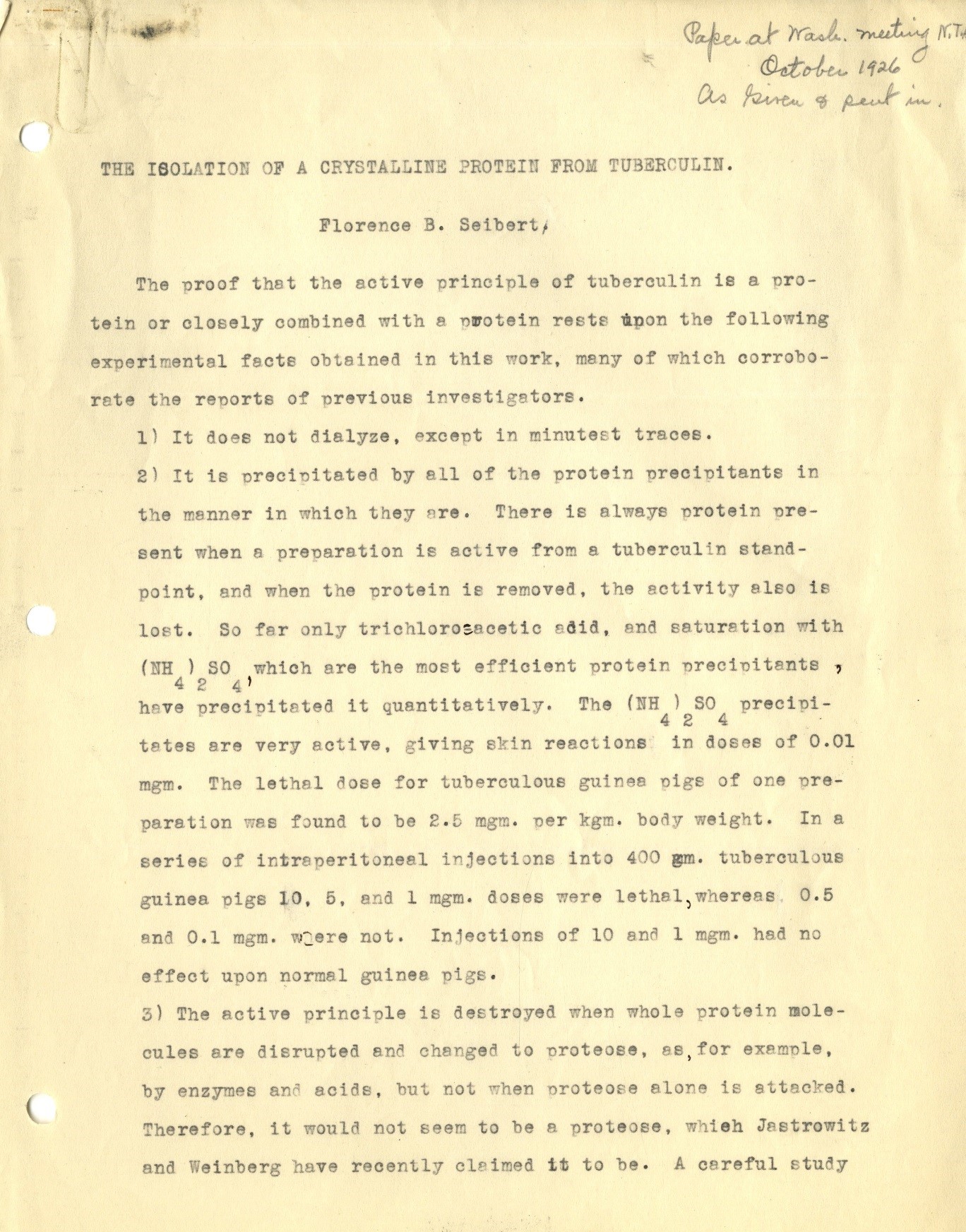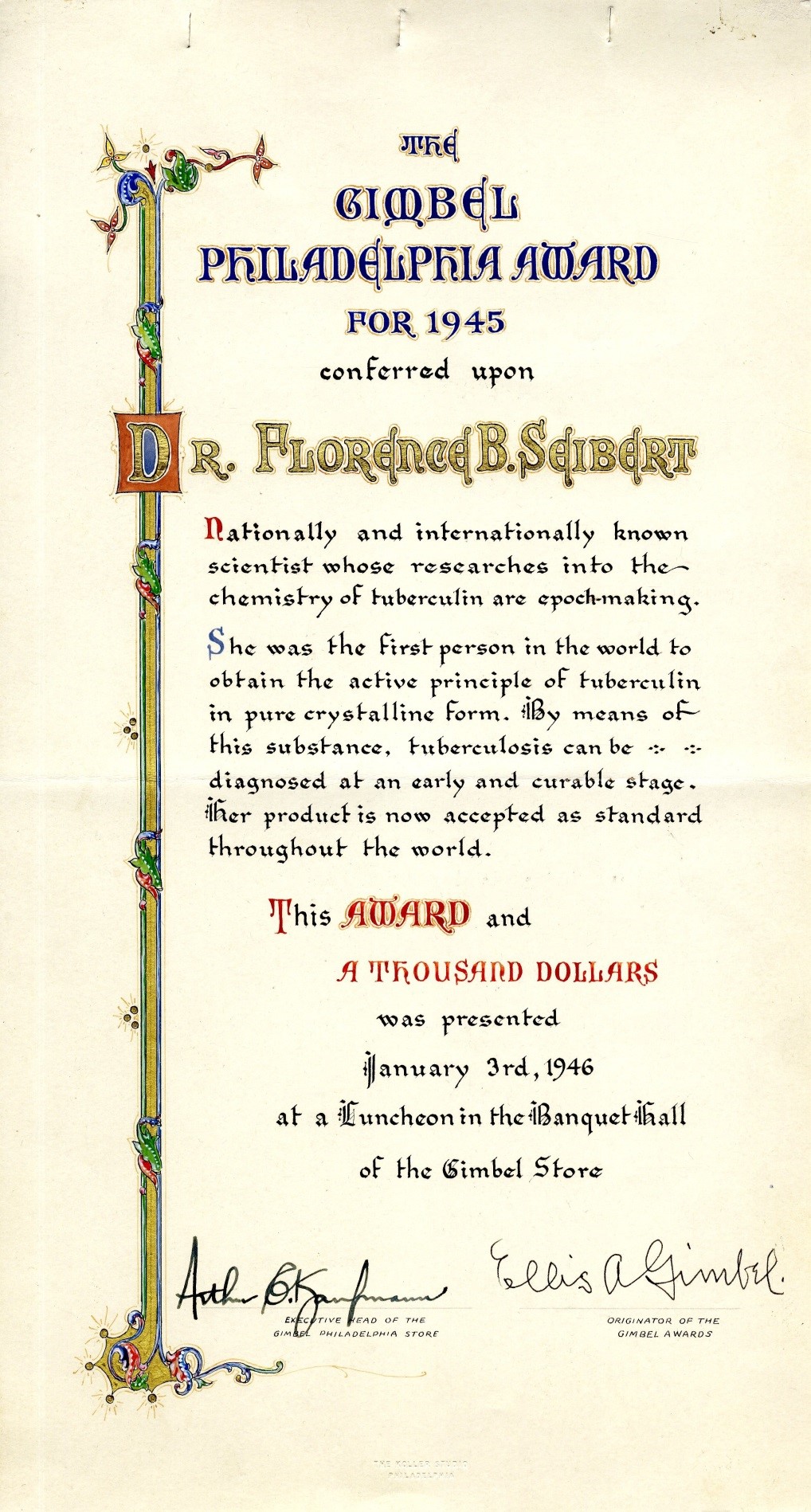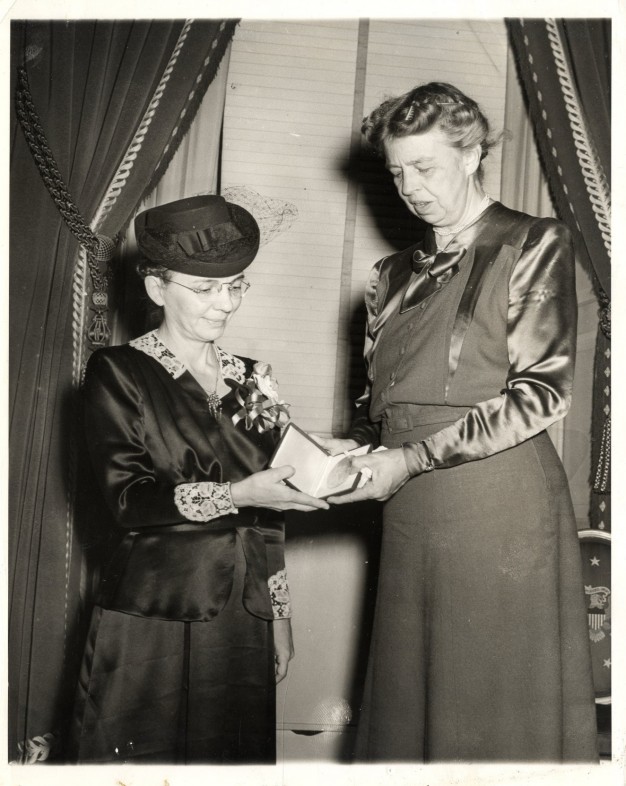Florence Seibert: Inventor of the Standard TB test
Florence Barbara Seibert (1897-1991) was an American biochemist who invented the first reliable tuberculosis test and helped improve the safety of intravenous injections.
Born in Easton, Pennsylvania, Seibert contracted polio at an early age. As a result, she would suffer from a lifelong limp. Spurred by her interest in science, she was awarded a scholarship to Goucher College, where she earned a degree in chemistry in 1918. After briefly working as a chemist at a paper mill, she went on to study for a doctorate at Yale University. As part of her graduate work under Lafayette B. Mendel, she discovered which proteins caused fevers after patients had been injected with protein solutions containing distilled water. She then invented a distilling apparatus that prevented bacterial contamination.
From 1924 to 1928, Seibert was a Porter Fellow at the University of Chicago who served as a pathology instructor and continued her research in pyrogenic distilled water. During this time she met Esmond R. Long, who was studying tuberculosis. In 1932, she relocated with Long to the Henry Phipps Institute at the University of Pennsylvania, as an assistant professor in biochemistry. With funding from the National Tuberculosis Association, the two worked for 31 years, collaborating and developing methods for separating and purifying the protein from Mycobacterium tuberculosis, obtaining purified protein derivative (PPD) thus enabling the creation of a reliable test for the disease. She published her first work on purification of tuberculin in 1934.

From 1937 to 1938, while working with Theodor Svedberg at the University of Uppsala, Sweden, she developed methods for purifying a crystalline tuberculin derivative, therefore, successfully isolating the tuberculosis protein molecule. By 1940, Seibert had improved her protein purification procedure sufficiently for it to become the international standard for use in tuberculin tests. For this work, she received the Trudeau Medal from the National Tuberculosis Association in 1938, the Garvan Medal from the American Chemical Society in 1941, and the first Achievement Award from the Association of University Women in 1943. Other awards she received, during this time, include the National Achievement Award of 1944 and the Gimbel Award of 1946.

Upon her retirement from the Phipps Institute in 1959, she and her sister Molly moved to St. Petersburg, Florida. She continued her research of the relationship between bacteria and types of cancer at the Mound Park Hospital and the Bay Pines V.A. Research Center. She continued to publish scientific papers until 1977.

